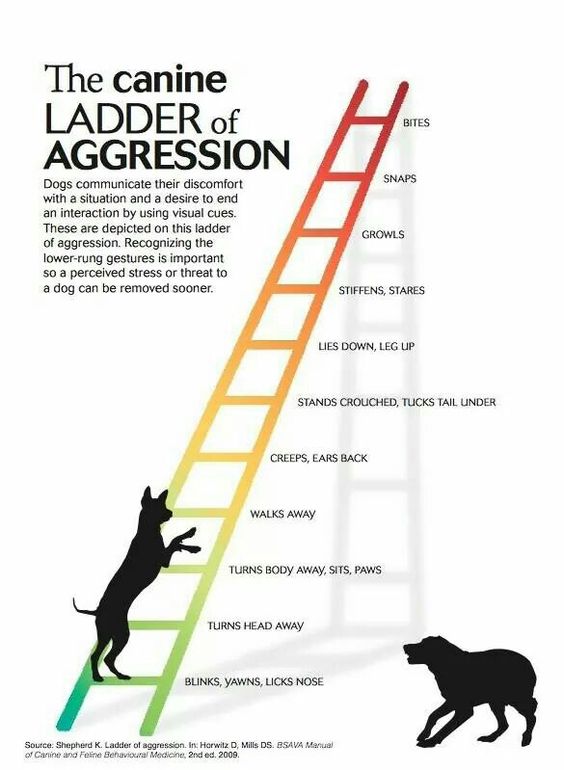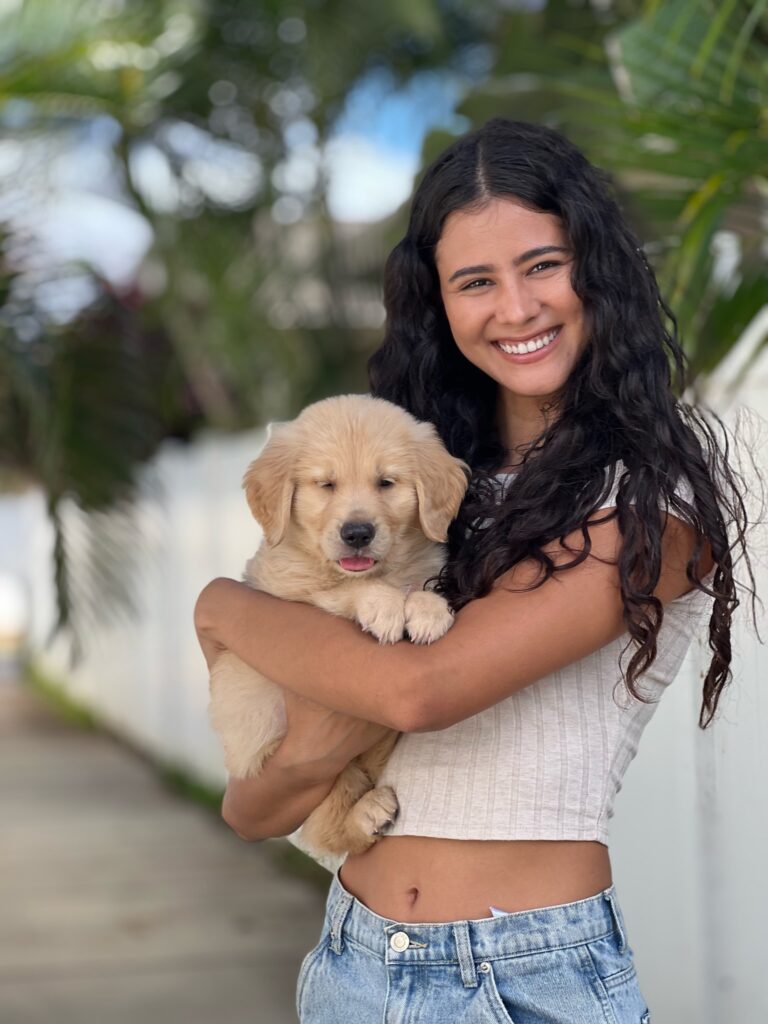
Dogs are constantly communicating with us, but their language is one of movement, posture, and subtle signals rather than words. Understanding dog’s body language is essential for anyone who wants to build a strong, trusting relationship with their dog. It also plays a crucial role in effective training, helping you recognize when your dog is comfortable, stressed, or even on the verge of aggression.
The Ladder of Aggression: Recognizing Early Warnings
The Ladder of Aggression is a valuable concept in understanding how dogs communicate their warning signals to us. It starts with subtle signs and progresses to more obvious behaviors if their discomfort isn’t addressed. Here’s a simplified breakdown:

Yawning, Licking Lips, and Turning Away:

These are the earliest signs that a dog is uncomfortable. They’re often subtle and easy to miss, but they indicate that your dog is trying to avoid a situation.
EX: A dog may exhibit these behaviors during human greetings or dog greetings.
Moving Away or Freezing:

If the early signs are ignored, your dog might try to move away from the source of discomfort or freeze in place. This is a stronger signal that your dog is uncomfortable.
Low Growling or Showing Teeth:

At this stage, the dog is more clearly signaling their discomfort and may begin to show their teeth or emit a low growl. This is a warning that should be taken seriously.
Barking, Lunging, or Snapping:

If previous signals are ignored, your dog may escalate to barking or lunging. This is often a last resort before biting.
Understanding the Ladder of Aggression helps you intervene early, addressing your dog’s needs before they feel the need to escalate.
Reading Relaxation and Happiness:
When your dog is relaxed and happy, it’s a joy to watch. Signs include a loose, wagging tail, relaxed posture, and soft eyes. A slightly open mouth with a gentle expression is another good indicator. One of the most delightful signals of happiness is the play bow, where your dog lowers their front end while keeping their rear in the air—an invitation to play that’s hard to resist!
Spotting Stress and Anxiety:
Stress and anxiety are common in dogs, and recognizing these signs is crucial to preventing escalation. A tucked tail, ears pinned back, or avoiding eye contact are clear signals of discomfort. You might also notice your dog showing the whites of their eyes (often called “whale eye”), licking their lips, yawning, or panting excessively. These are cues that they need space from whatever is making them uncomfortable.
Recognizing Aggression and Fear:
Aggression and fear often overlap, and understanding these signals can prevent dangerous situations. Raised hackles, growling, and showing teeth are obvious signs, but there are more subtle cues as well. A stiff posture, direct stare, or even backing away can indicate that your dog is feeling threatened. Recognizing these signs early can help you remove your dog from a stressful situation before it escalates.
Don’t Miss the Subtle Signals:
Not all body language is as easy to read. Subtle cues like a head turn, slow blinking, or sudden stillness can indicate that your dog is trying to avoid confrontation. A raised paw might suggest uncertainty, and even a tail wag can be misleading—try to look at their overall body language and not just their tail. These small signals are just as important to understand as the more obvious ones.
Body Language Variations:
Every dog is unique, and their body language can vary depending on their breed and individual personality. Some breeds have traits that can make reading their body language more challenging—like docked tails or cropped ears. It’s essential to learn your dog’s specific cues and understand that what’s normal for one dog might be different for another. Spend time observing your dog in various situations to learn what their signals mean.
Practical Observation Tips:
Understanding canine body language is a skill that deepens over time. By paying close attention to your dog’s signals and responding to them appropriately, you not only improve your training efforts but also strengthen the bond you share with your furry friend. The more you “listen” to what your dog is telling you with their body, the more harmonious and trusting your relationship will become. So next time your dog “speaks” through their body language, make sure you’re tuned in and ready to respond.
To truly understand your dog’s body language, you need to be observant. Watch how they behave in different situations—when they’re playing, meeting new people, or simply relaxing. The more you observe, the better you’ll get at reading their signals. And it’s not just about observation; it’s also about responding appropriately. If your dog shows signs of stress, calmly remove them from the situation. If they’re showing signs of happiness or inviting you to play, engage with them to reinforce that positive behavior.
RESOURCES:

Looking for a way to start your puppy’s training journey? My New 4-Week Puppy Program bundle offers personalized 1:1 in-person sessions to cover all the essentials, giving you and your pup a solid foundation in just a month.
+ view comments . . .